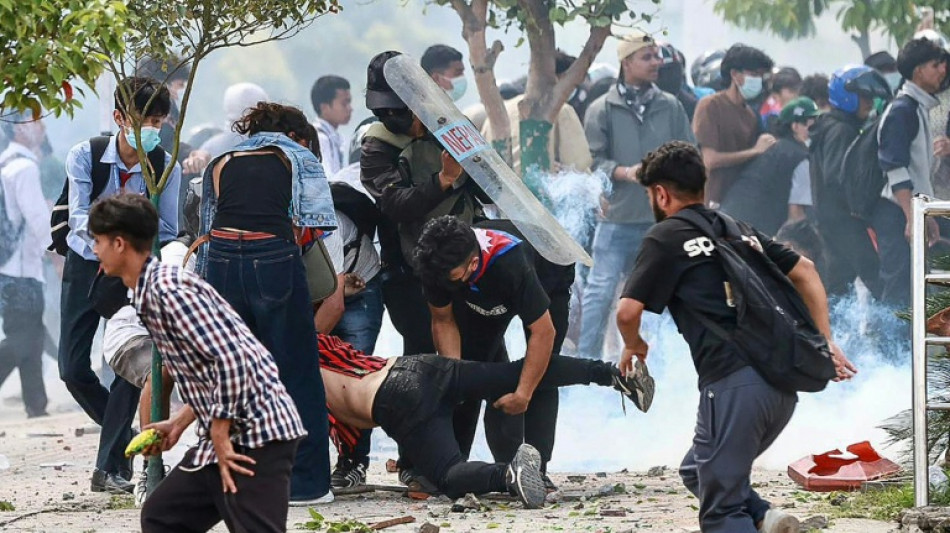
CMSC
0.0200

Nepal police on Monday opened fire, killing at least 17 people as thousands of young protesters took to the streets of Kathmandu demanding the government lift a social media ban and tackle corruption.
Several social media sites -- including Facebook, YouTube and X -- have been inaccessible in Nepal since Friday after the government blocked 26 unregistered platforms, leaving users angry and confused.
Police used rubber bullets, tear gas, water cannon and batons when the demonstrators pushed through barbed wire and tried to storm into a restricted area near parliament.
"Seventeen people have died," Shekhar Khanal, spokesman for the Kathmandu valley police, told AFP.
Khanal said more than 400 people were injured, including over 100 police.
"I had been there for a peaceful protest, but the government used force," said Iman Magar, 20, who was hit in his right arm.
"It was not a rubber bullet but a metallic one, and it took away a part of my hand. The doctor says I need to undergo an operation."
Sirens rang through the city as the injured were taken to hospitals.
"I have never seen such a disturbing situation at the hospital," said Ranjana Nepal, information officer at the Civil Hospital which received many of those wounded.
"Tear gas entered the hospital area as well, making it difficult for doctors to work," she told AFP.
Anger poured over social media over the excessive use of force and death of young demonstrators.
Amnesty International called for a "thorough, independent and impartial investigation" into the deaths and said live ammunition had been used against protesters.
The district administration imposed a curfew in several key areas of the city, including the parliament, the president's residence and Singha Durbar, which houses the prime minister's office.
Some of the demonstrators had climbed over the wall into the parliament premises and its gate was vandalised.
Similar protests were organised in other districts across the country.
Popular platforms such as Instagram have millions of users in Nepal who rely on them for entertainment, news and business.
"We were triggered by the social media ban but that is not the only reason we are gathered here," said student Yujan Rajbhandari, 24.
"We are protesting against corruption that has been institutionalised in Nepal."
- 'Want to see change' -
Another student, Ikshama Tumrok, 20, said she was protesting against the "authoritarian attitude" of the government.
"We want to see change. Others have endured this, but it has to end with our generation," she told AFP.
Demonstrators had started their protest in Kathmandu with the national anthem and waving the country's flag, before chanting against the social media stoppage and corruption.
There have been several corruption cases reported in the last few years involving ministers, former ministers and high-profile officials.
Since the ban, videos contrasting the struggles of ordinary Nepalis with the children of politicians flaunting luxury goods and expensive vacations have gone viral on TikTok, which is still operating.
"There have been movements abroad against corruption and they (the government) are afraid that might happen here as well," said protester Bhumika Bharati.
The cabinet decided last month to give the affected social media firms seven days to register in Nepal, establish a point of contact and designate a resident grievance handling officer and compliance officer.
The decision came after a Supreme Court order in September last year.
In a statement on Sunday, the government said it respected freedom of thought and expression and was committed to "creating an environment for their protection and unfettered use".
The government blocked access to the Telegram messaging app in July, citing a rise in online fraud and money laundering.
It lifted a nine-month ban on TikTok in August last year after the platform agreed to comply with Nepali regulations.
O.Holub--TPP